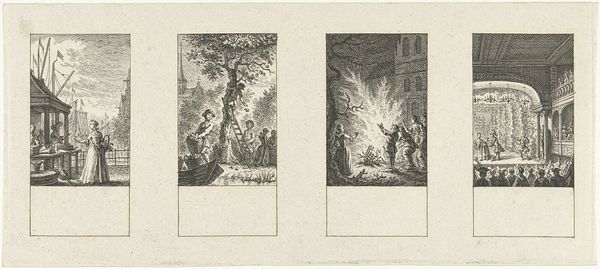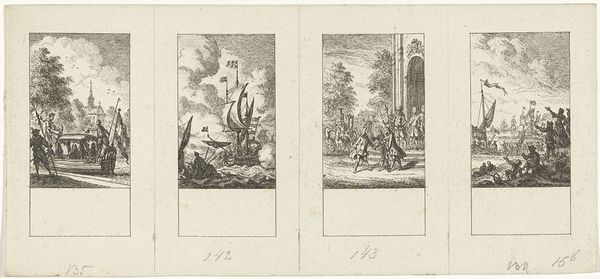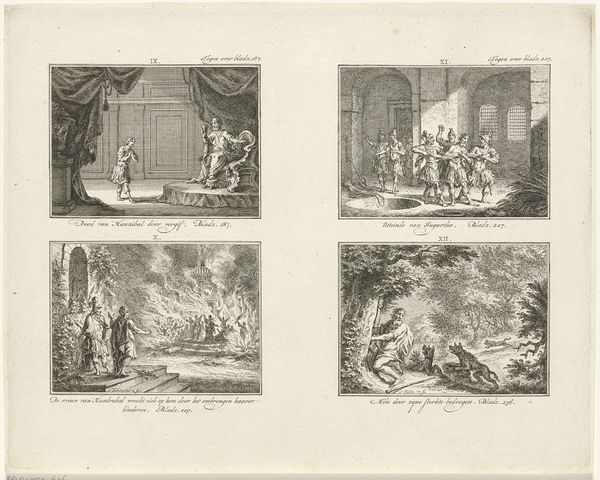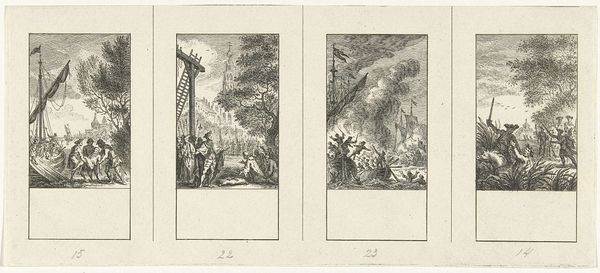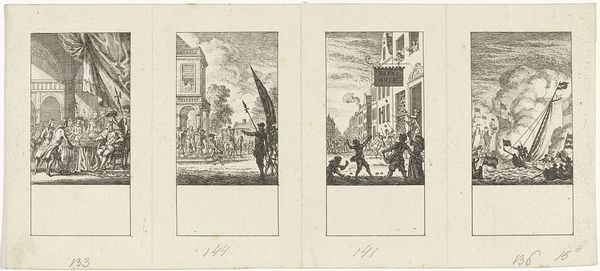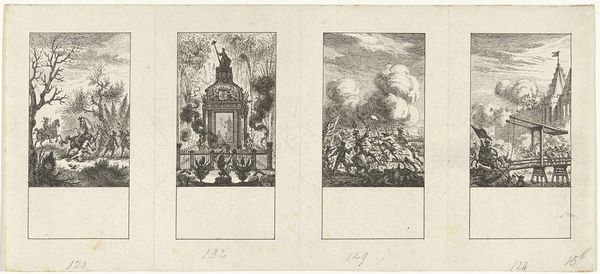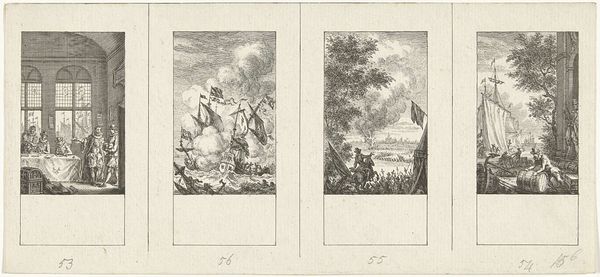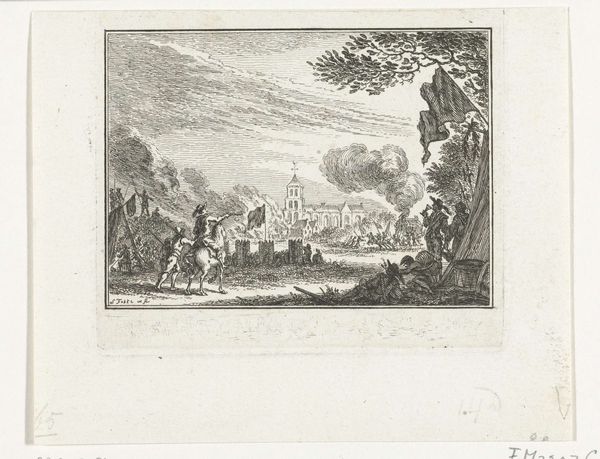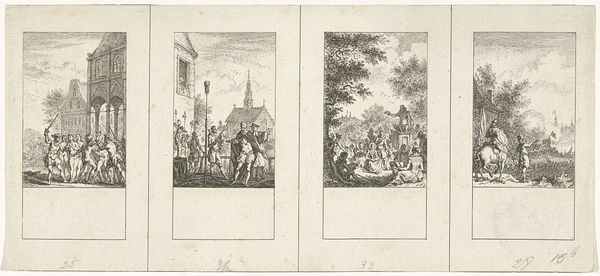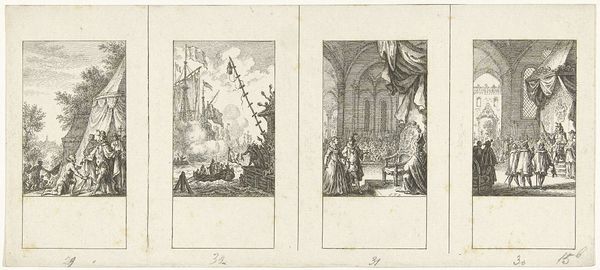
print, etching
#
baroque
# print
#
etching
#
etching
#
genre-painting
#
history-painting
Dimensions: height 110 mm, width 249 mm
Copyright: Rijks Museum: Open Domain
Curator: What strikes me first about these four vignettes is their almost overwhelming sense of activity, like moments lifted directly from a play. Editor: Indeed. This etching, entitled "Vier episodes uit de vaderlandse geschiedenis," was created by Simon Fokke, with the production spanning from 1722 to 1784. It currently resides here at the Rijksmuseum. It provides four distinct views. How does the composition of the separate parts work? Curator: Each scene utilizes an intricate network of fine lines to create a sense of depth and movement, wouldn't you agree? The foreground figures are well-defined, while the backgrounds fade into a textured haze of etching marks, contributing to the dramatic narratives. I am fascinated by how the textures contribute to the meaning. Editor: Fascinating, yes, but these aren't arbitrary aesthetic decisions. Each of these episodes relates to Dutch national history, shaped by social and political contexts. Look, in the first panel, we see a grand presentation of dignitaries. But that quickly gives way to burning pyres, social unrest, and some sign of war or terrible weather. We must read those textures and gestures, poses, and settings, as indicative of real moments in the nation's narrative. What’s depicted is not mere fancy. Curator: A crucial aspect to note is how the lighting varies significantly across the panels. From the relatively balanced illumination in the first scene to the dramatic, contrasting light and shadow of the burning fire and ominous skies, Fokke skillfully manipulates the light to amplify the emotional resonance of each event. What might that light mean formally? Editor: Those stark contrasts underscore periods of turmoil and reformation in the Netherlands, of course. It's a reflection of the social and political upheavals of the era, reproduced through the very popular medium of printmaking. Fokke understood how to deploy imagery to stir nationalistic sentiments among a growing populace. Curator: A compelling aspect is the rhythm established through the sequence, too. It progresses like stanzas within a poem. The compositions alternate between controlled, ceremonial events and chaotic outbursts of action, keeping the viewer engaged and emotionally invested throughout. Editor: Absolutely. This piece really shows how history and emotion intertwine. The form accentuates the national story, as told to, and shaped by, its public. Curator: It all serves to remind us of how effectively formal arrangements of art evoke and shape deeper emotional states. Editor: It speaks volumes about how the creation and distribution of art is fundamentally a political enterprise, of course.
Comments
No comments
Be the first to comment and join the conversation on the ultimate creative platform.
